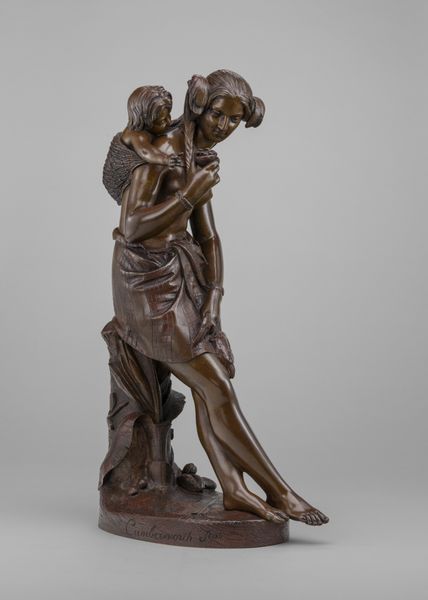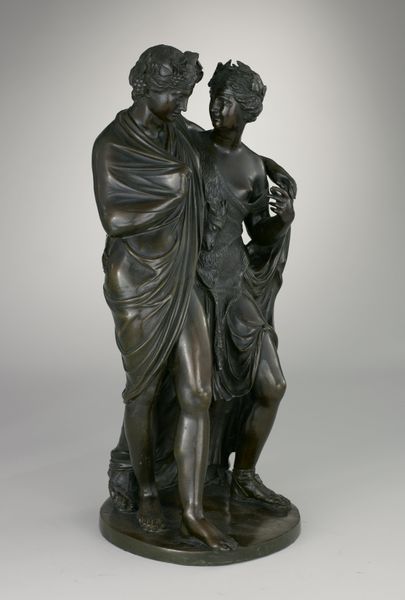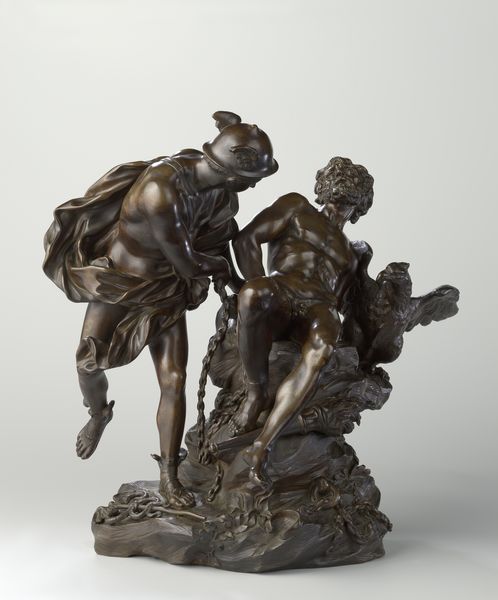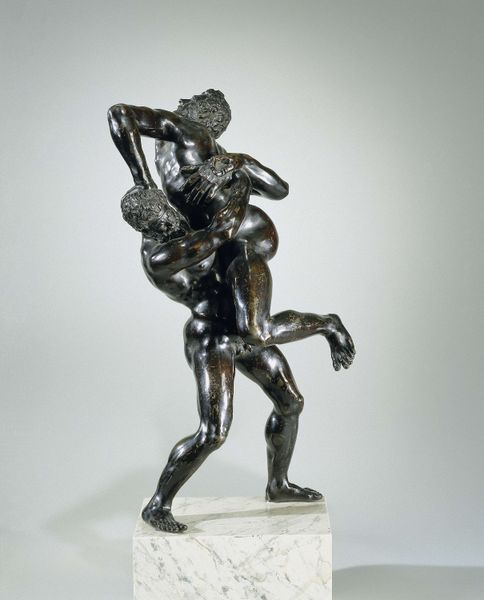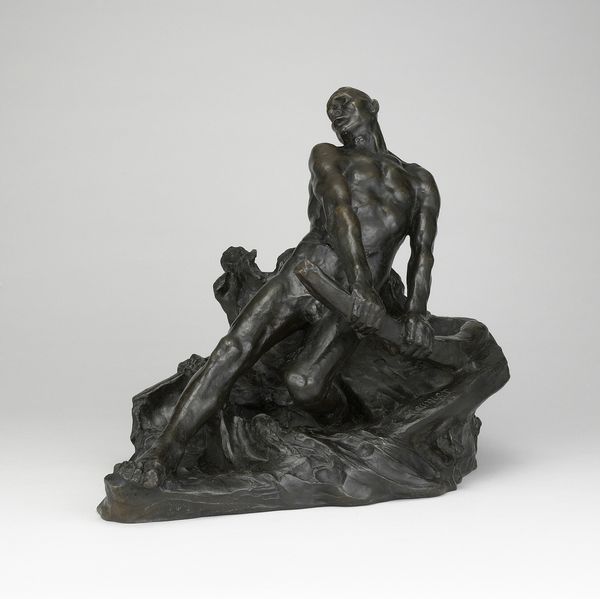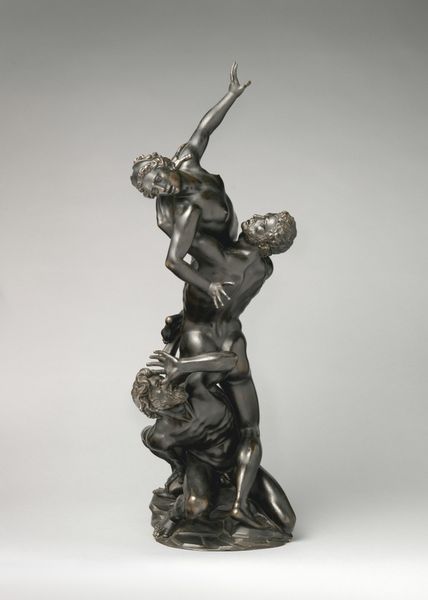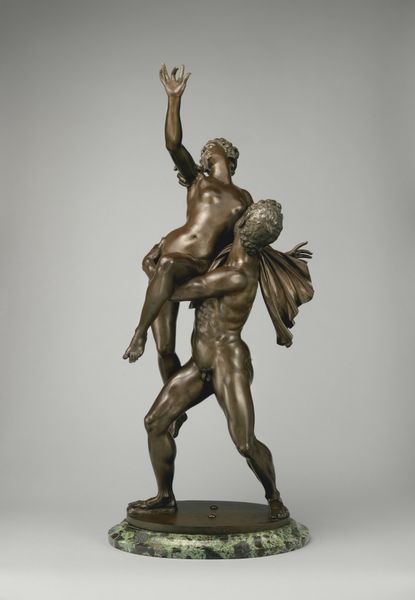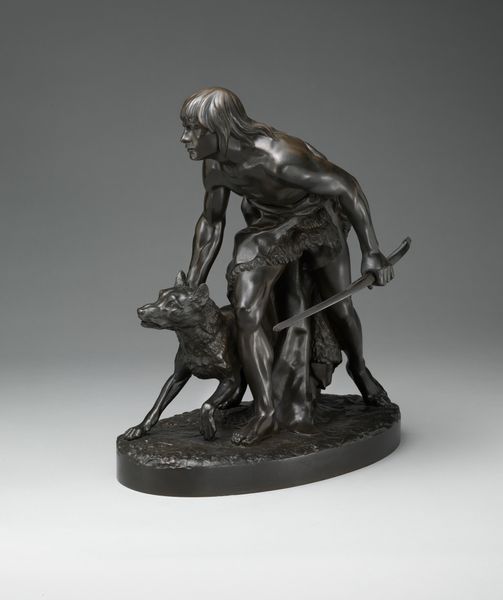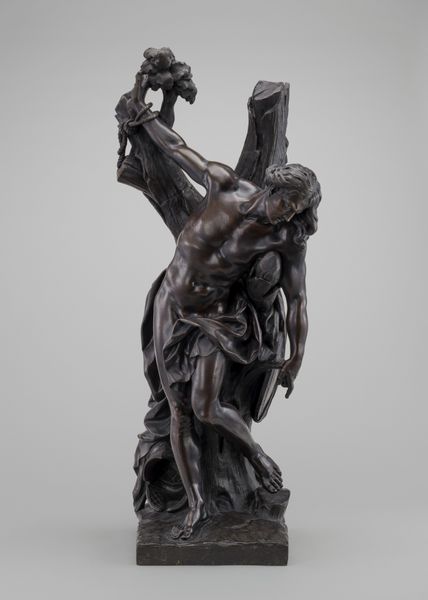
Dimensions: height 91.5 cm, width 40 cm, depth 36 cm, weight 42 kg
Copyright: Rijks Museum: Open Domain
'Le retour du vainquer' – 'The Return of the Conqueror' – was created by Eugène Marioton in bronze around the turn of the 20th century. Bronze is an alloy of copper and tin, and it’s been favored by sculptors for millennia. It allows for the creation of highly detailed, durable forms through the lost-wax casting method. This process involves creating a wax model, encasing it in a mold, melting out the wax, and then pouring molten bronze into the resulting cavity. After cooling, the mold is broken away, revealing the bronze sculpture which is then finished with chisels and patinas to achieve the final surface appearance. Here, Marioton has used the material to great expressive effect, capturing the texture of draped cloth and the smooth surfaces of skin. But beyond its aesthetic qualities, bronze carries historical weight. The mining, smelting, and casting of bronze have been linked to social structures and trade. A sculpture like this reminds us of the many hands, skilled traditions, and global networks involved in its creation, blurring the lines between art, craft, and industry.
Comments
No comments
Be the first to comment and join the conversation on the ultimate creative platform.
